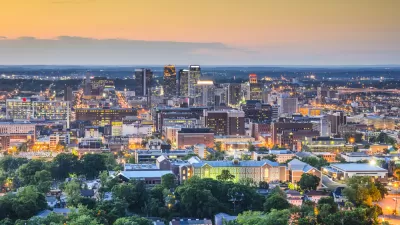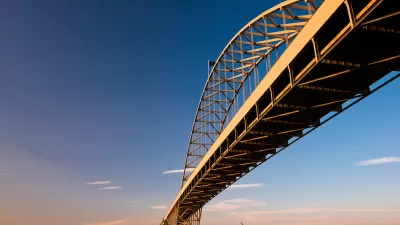Cities and states say the American Rescue Plan Act has been crucial to keeping the lights on during the pandemic, but some Republican lawmakers denounce spending on projects unrelated to COVID relief.

"A year after President Biden signed the $1.9 trillion American Rescue Plan Act into law, states and localities have used their $350 billion share of direct aid to provide Covid-19 vaccines, give workers on the frontlines of the pandemic extra pay, and to boost local economies." But as Kery Murakami reports, some lawmakers are questioning spending on projects that aren't pandemic-related. "For instance, states have earmarked the money to build monuments, create museums, tear down at least one abandoned university dormitory, and to carry out construction on courthouse buildings, according to a National Conference of State Legislatures database."
"This criticism has grown as more states report budget surpluses and as the GOP, during a midterm election year that will decide control of Congress, is seizing on the idea that the spending Democrats backed in the American Rescue Plan has contributed to a rising wave of inflation," writes Murakami. "The 152 cities and counties the National League of Cities, Brookings Metro and the National Association of Counties have been tracking have only decided what to do with 48.6% of their ARPA dollars."
Supporters of ARPA say it "has been instrumental in helping state and local governments weather the pandemic's economic fallout and for supporting their response to the health crisis" by replacing lost revenue and helping cities maintain essential services.
The source article details how states have spent ARPA funds so far and the rationales given for the projects.
FULL STORY: One Year Into ARPA Rollout, Spending Varies as Scrutiny Mounts

Alabama: Trump Terminates Settlements for Black Communities Harmed By Raw Sewage
Trump deemed the landmark civil rights agreement “illegal DEI and environmental justice policy.”

Planetizen Federal Action Tracker
A weekly monitor of how Trump’s orders and actions are impacting planners and planning in America.

The 120 Year Old Tiny Home Villages That Sheltered San Francisco’s Earthquake Refugees
More than a century ago, San Francisco mobilized to house thousands of residents displaced by the 1906 earthquake. Could their strategy offer a model for the present?

Ken Jennings Launches Transit Web Series
The Jeopardy champ wants you to ride public transit.

BLM To Rescind Public Lands Rule
The change will downgrade conservation, once again putting federal land at risk for mining and other extractive uses.

Indy Neighborhood Group Builds Temporary Multi-Use Path
Community members, aided in part by funding from the city, repurposed a vehicle lane to create a protected bike and pedestrian path for the summer season.
Urban Design for Planners 1: Software Tools
This six-course series explores essential urban design concepts using open source software and equips planners with the tools they need to participate fully in the urban design process.
Planning for Universal Design
Learn the tools for implementing Universal Design in planning regulations.
Clanton & Associates, Inc.
Jessamine County Fiscal Court
Institute for Housing and Urban Development Studies (IHS)
City of Grandview
Harvard GSD Executive Education
Toledo-Lucas County Plan Commissions
Salt Lake City
NYU Wagner Graduate School of Public Service





























